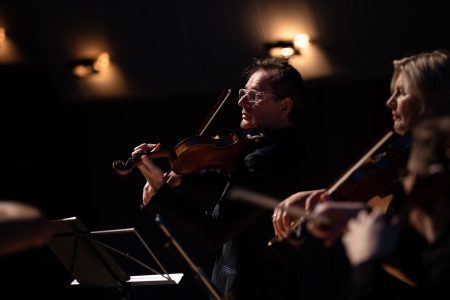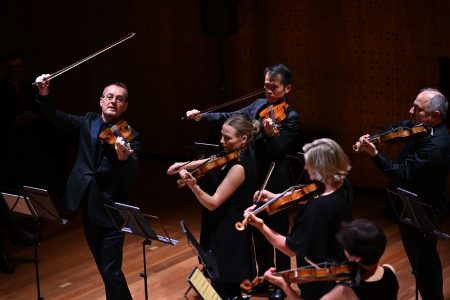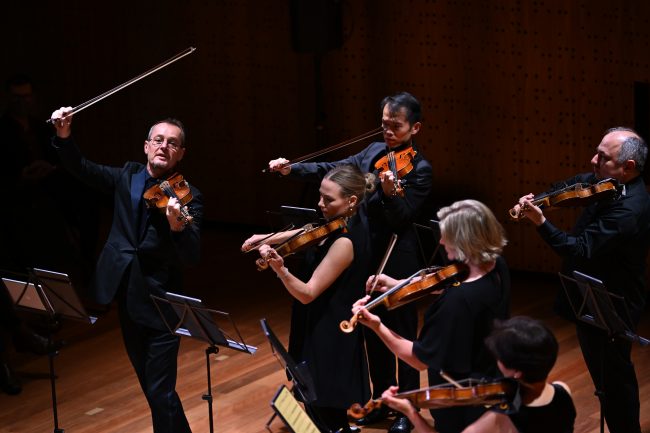The Australian Chamber Orchestra – Dvorak’s Serenade
City Recital Hall, Angel Place – 5 August 2023
Reviewed by Paul Neeson (Arts Wednesday)

In this concert, the ACO demonstrated a retrograde deconstruction of modernism in music. The four works in the program were in reverse chronological order ranging from the ultra-modern blending of traditional minuet and trio forms with atonal scratching in Caroline Shaw’s Entr’acte for String Orchestra, through to the visceral and dogged modernism of Bartok’s 5th String Quartet, and finally to the romanticism of Josef Suk’s Meditation on Old Bohemian Chorale and Dvorak’s Serenade for Strings.
Pulitzer Prize winner, Caroline Shaw, is talented in many genres having worked with rappers, television scores and contemporary classical. The Entr’acte for String Orchestra was, according to the program notes, a modern take on the minuet and trio form. While it started with a recognisable 19th century minuet, the trio quickly shifted into atonal scratching, multi (and chaotic) rhythms, pizzicato, and back again to the 19th century. The constant and frenetic changes of style and form had an overall effect of hearing an edited show reel of what the composer is capable of. She really is the jack of all trades.
Bartok’s 5th String Quartet is heralded as one of the landmarks of mid 20th century composition. This arrangement for String Orchestra by Richard Tognetti stayed true to the composer’s work while embellishing it with some added texture and depth. To the average listener, it is not easy listening and requires a certain amount of stamina to stay focused on the emotion and energy it presents. Bartok was a major influence in the modernist movement trying to break down the traditional diatonic forms of classical music. His methodology involved painstaking research into Hungarian folk tunes and rhythms. By his 5th quartet, those idioms had all but been subsumed by the forms he had developed, but there were a few sunny remnants of a pastoral Hungary in the 3rd and 5th movements given to the solo viola played by Stefanie Farrands. Ultimately many classical composers had rejected that style of atonality by the end of the 20th century and returned to tonal (and more palatable?) techniques, even while incorporating that modernist sound world in their works. We heard the perfect example of this in the opening work by Caroline Shaw.

After interval we stepped back further in time with Josef Suk’s Meditation on Old Bohemian Chorale, composed in 1914. This was a turbulent time in central European history, and Suk composed the work as a subversive gesture to the local Czech population against their Austro-Hungarian rulers.
And finally we come to Atonin Dvorak’s Serenade for Strings from 1875. Jam-packed with hummable melodies and lilting dance rhythms, it is no wonder that this is one of Dvorak’s most performed compositions. Tognetti’s interpretation was flawless, with sharp pointy phrasing contrasted with the smoothest of languid washes, finding new readings in the timeless score. Here the orchestra was at the height of their formidable and at these times unrivalled powers.
It was at times a difficult journey, but when we arrived it was well worth it. In a way, Caroline Shaw’s work opened our ears and our minds to set us up for the trials and tribulations of the musical journey ahead of us. Like climbing a mountain, there is always going to be some difficult terrain, but is was truly worth it for the view when you arrive at the summit.
Listen to a recent interview with ACO Principal Viola here.
